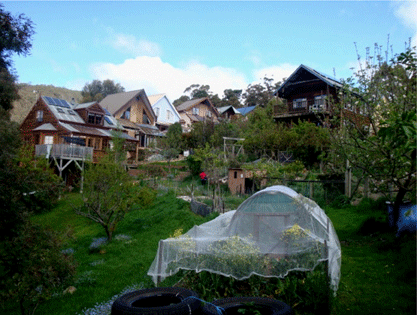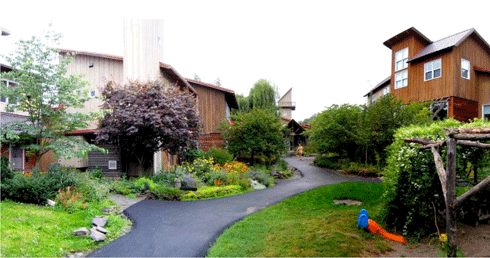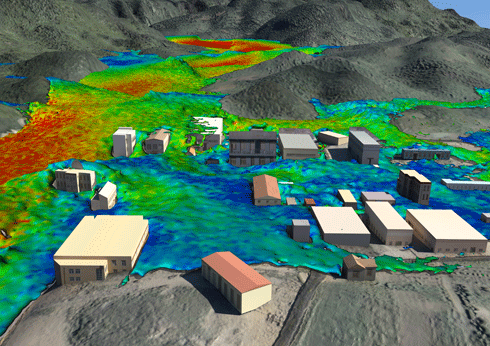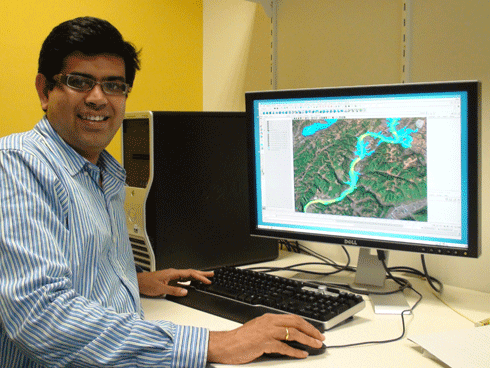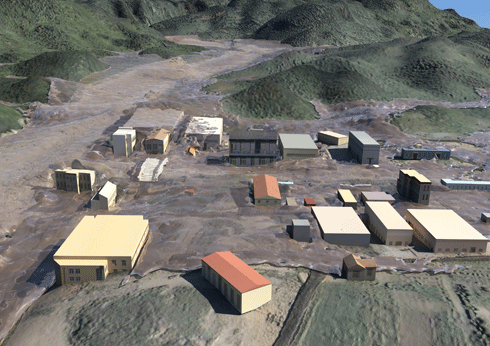
|
Published: 23 April 2012
Sustainable neighbourhoods: the cohousing model
The ‘housing crisis’ in our cities is firmly on the national agenda. Gilo Holtzman reports on a long-standing housing model that offers the promise of affordability, sustainability and social cohesion.
Social isolation, rising housing costs, congestion, increasing petrol, energy and water bills, and living long distances from family, friends and jobs: these issues are only a fraction of our modern living inheritance in Australian cities. Together with climate change challenges and shrinking green space, these problems have led to the pursuit of alternative, more sustainable and more affordable ways of housing and living.
According to a recent Grattan Institute survey, Getting The Housing We Want, ‘Contrary to myth and assumption, Australians want a mixture of housing choices – not just detached houses. Many want to live in a semi-detached home or an apartment in locations that are close to family or friends, or to shops.’ Australians also want neighbourhoods that are more lively, friendly and safe.
In creating our future neighbourhoods, whether they are newly built or retrofitted, in urban infill, the fringe, or brownfields developments, our biggest challenge is to find the formula that will create resilience in our living arrangements. Our models need to meet the challenges of our time while also ensuring longevity.
For the last 40 years, one innovative housing model has demonstrated, through design and resource sharing, the capacity to develop a neighbourhood characterised by strong social cohesion and a reduced environmental footprint. This is cohousing.
Cohousing is a type of intentional community where a group of people, independently or in partnership with developers, organise to create a collaborative neighbourhood, an alternative way of living based on mutual respect for each other and the environment.
Cohousing neighbourhoods vary in size, ranging from 12–36 households, with an ‘ideal’ population including at least 50 adults of a range of ages, plus children. The focus is on the people: cars are parked at the periphery of the site and the physical design encourages both social contact and private space. Private homes contain all the features of conventional homes, but residents also have access to communal facilities such as an open space, courtyards, a playground and a common house where optional shared meals are prepared and eaten with neighbours and other social events occur.
The cohousing model involves participation by residents within a non-hierarchical management structure, fostering shared decision-making that is focused on creating and maintaining a caring community, encouraging the development of meaningful relationships between neighbours, and ensuring that residents feel a sense of belonging. This is in line with the idea of ‘neighbourhood development corporations’, proposed in Getting The Housing We Want, as a way to empower residents to be more active in their neighbourhood planning decisions, ensuring that they have a real say in the future of their neighbourhoods.
This involvement in management tends to encourage a sense of physical safety, where neighbourly networks keep an eye out for residents. For households that include children, the communities offer youth role models and supervision from a broader range of adults than simply parents. The physical layouts of the neighbourhood buildings encourage this and also can create financial opportunities for residents.
Much of the social recycling, sharing and food-growing initiatives evolving in our cities – community gardens, sustainable streets, home harvest swaps, free-cycling, sharehoods – occur naturally in the cohousing neighbourhood setting. A quarter of Australian households already consist of people living on their own – including single parent families and older people. Now more than ever, the type of community building encouraged by cohousing is needed.
Of this growing sole-person household population, Peter Mares of The Grattan Institute says: ‘This demographic reality means that there are a growing number of Australians who are at greater risk of social isolation and loneliness, which, as our report Social Cities shows, are correlated with poor health outcomes. In this context, we find it surprising that there is not more innovation in housing arrangements, including more investigation of the potential for cohousing as one alternative approach.’
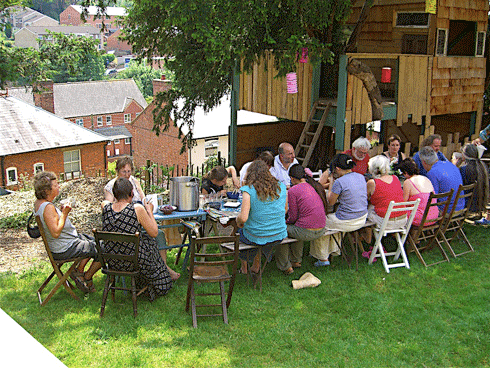
|
|
Sharing a meal at Springhill Cohousing, Gloucestershire, UK. Springhill comprises 35 homes, ranging from five-bedroom houses to one-bedroom flats. It was completed in 2006 and was the first new-build cohousing scheme to be finished in the UK.
Credit: Nicky Ferguson Rights: Licensed under a Creative Commons Attribution Non-Commercial No-Derivatives License |
Cohousing was pioneered in Denmark in the 1960s by a group of working parents who realised that if they shared many of the household tasks across the community, they would have far more time to socialise, to be with their children and it would also reduce their cost of living. 1
The cohousing movement is gaining momentum around the world. In Sweden and Holland it is well established as a social housing (public housing) and senior housing alternative. In the US and other countries in the world, cohousing neighbourhoods are making inroads into the mainstream housing market.
However, in Australia the cohousing model has been slow to develop. Contributing factors include the culture of housing in this country with its post-war tradition of high rates of home ownership on the quarter-acre block, high land prices, lack of government incentives and complications at the local government level.
The first Australian cohousing neighbourhood, ‘Cascade Cohousing’ in Hobart, was established in 1991. Sixteen small-footprint households housing 20 adults and 16 children live there. The houses are oriented to the north and have high thermal mass. After 21 years, it is still going strong and demonstrating its relevancy to our present and future needs. Today there are three more existing cohousing neighbourhoods: ‘Pinakarri Community’ in Fremantle WA, ‘Cohousing Cooperative’ in Hobart and the newly occupied ‘Ecohousing Heidelberg’ cooperative in Melbourne. A few more initiatives are in various stage of development.
One design aspect that is common to many cohousing neighbourhoods is the tendency to build in clusters. This allows for a smaller footprint per dwelling, leaving more open space for the community to share. Building in clusters also saves on building materials and reduces heating and cooling energy costs. The grouping of dwellings together, extensive common facilities and shared amenities encourage pro-environmental behaviour among residents.
Cohousing makes significant space, energy and materials savings possible. A 2005 study of cohousing in the US found on average 31% space savings, 57% electricity savings, and a saving of 8% on materials. 2
One of the key virtues of the cohousing model is the flexibility it gains from being based on the needs and capabilities of those it is intended to house. It can be adapted for social housing and senior housing as well as cooperative, residential land trust or ecovillage settings. Although cohousing is likely to remain a relatively small proportion of housing in any country, it has great potential to influence housing, neighbourhood and urban design generally. 3
Sustainable practices in cohousing
-
smaller dwelling sizes and allotments allow for more shared open space
-
focus on energy efficiency
-
use of solar energy
-
shared resources such as meeting facilities
-
residents engaging in bartering services (such as trading items, and fruits and vegetables)
Gilo Holtzman is a building designer working in the field of cohousing. He is a member of Cohousing Australia, is a co-founder of the E-Co-Neighbourhood Blue Mountains and is a partner in Synthesis Studio, an architecture practice specialising in environmentally and socially sustainable design.
1 Holtzman G (2010). Introduction to Cohousing and the Australian Context .
2 Williams J (2008). Predicting an American future for cohousing. Future 40, 268–286.
3 Bamford G and Lennon L (2008). DES 18 Cohousing and rethinking the neighbourhood: the Australian context. BEDP Environment Design Guide 54(5), 1–10.


